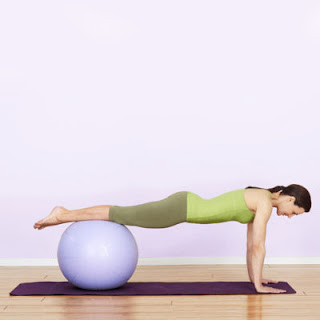 |
| Binge on healthy foods. |
Binge eating and don't know what to do? Stop eating sugar.
Think you can lose weight by simply cutting back on your splurges and enjoying things like French fries or cookies in moderation? Here’s a hard truth: the old advice to enjoy foods you crave in moderation simply doesn’t work for everyone. Some people need to completely abstain from their “weaknesses” in order to feel successful and reach their weight loss goals.
I have worked in the health and fitness business for my entire professional life, so I know what I should and shouldn’t eat. And yet, I have a relentless sweet tooth that enables me to eat sugary treats that would make other people’s teeth hurt. I’ve tried limiting my indulgences, counted points, and established all sorts of boundaries. Here’s the one thing I’ve learned in all of this: I just simply can’t enjoy sweets in moderation. I can walk past the cookie jar all day and not indulge, but the minute I have one cookie, it’s a slippery slope and I’m staring at the bottom of an empty jar in no time. Does this sound familiar? I feel sure I’m not alone in my struggles with moderation; but, many common diets suggest that you should enjoy a “treat” in a controlled portion to avoid binging. For years, I’ve thought there must be something seriously wrong with me: why can’t I follow traditional wisdom and just enjoy ONE sugary goodie? I recently found an article (and some serious science to back it up) that made me make peace with my moderation-challenged behaviors.
The article classifies people into two groups: moderators and abstainers. The author suggests that some people (the moderators) feel more successful when they allow themselves the occasional indulgence or treat. For others, like yours truly, allowing the occasional indulgence literally opens the floodgates and translates into more stress and a sense of “failure”. People that fall into this second category are abstainers – those who fare better if they stay away from their weakness completely. For example, I feel much better if I make all sweet treats off-limits, rather than trying to limit myself to one or two Hershey’s Kisses per day. Neither the moderators nor the abstainers are “right”. Simply recognizing what resonates with your personality may change the way you structure your diet.
If you’re a person who feels that there is a pull much stronger than your willpower when it comes to treats you love, you may be exactly right. One 2011 study suggests that ghrelin, a hormone that helps your body recognize when it’s hungry and seek food in response, may also effect food addictions and your sweet tooth. Researchers found that certain genetic changes in the ghrelin hormone cause some people to consume more sugar. In another study, researchers concluded that increased levels of ghrelin might make you gravitate towards high-fat comfort foods. So, your inability to put the brakes on your late night Ben & Jerry’s indulgence may not be just in your head – you may be battling biology too. There are also a number of studies asserting that certain foods can be addictive substances to our bodies. One study suggests that sugar can be an addictive substance in and of itself, mirroring the chemical reactions that occur in the brain in response to drugs and alcohol. In these situations, doesn’t it make sense to avoid the addictive substance all together and prevent the chemical reactions that seem to make stopping at “just one” nearly impossible?
On the flip side, a recent study found that the more often people resist temptation, they are more likely to give in as the day goes on. The researchers found that mental resistance to a certain food increased cravings for that food. They suggest that the most effective strategy to control eating behaviors is not to resist food all together, but rather, to delay eating the food you are trying to decrease. Another article discusses ways in which restrictive diets can lead to binge eating, citing a classic 1940’s study called the “Minnesota Starvation Experiment”. These studies support the idea behind being a moderator and perhaps saving your treat until the end of the day or delaying your indulgence until you’ve completed your exercise for the day.
Is there a right way or a wrong way? Nope! It all depends on which path - moderating or abstaining - resonates most with your personality and will help you reach your goals. Some of you may feel overly controlled by foregoing those things that make you weak in the knees. If that sounds like you, then following advice like, “limit your sweet treats to once daily and keep it under 100 calories”, might be right up your alley. But, if this one sweet treat turns into an avalanche of Oreos, then try to step away from temptation and go for a walk or have a cup of tea instead. Identify your style and to thine own self be true. After all, no one knows you better than you!















